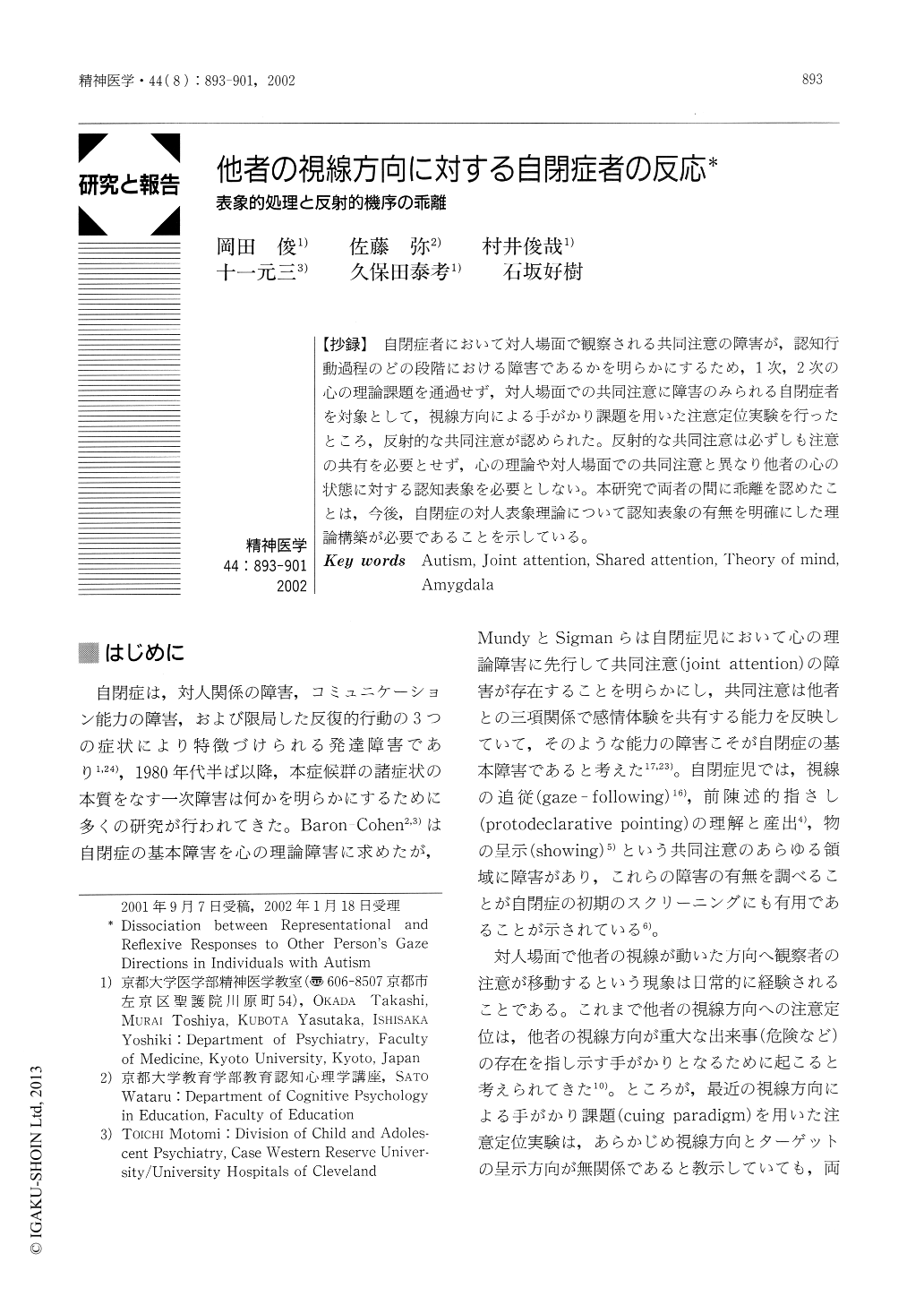Japanese
English
- 有料閲覧
- Abstract 文献概要
- 1ページ目 Look Inside
【抄録】 自閉症者において対人場面で観察される共同注意の障害が,認知行動過程のどの段階における障害であるかを明らかにするため,1次,2次の心の理論課題を通過せず,対人場面での共同注意に障害のみられる自閉症者を対象として,視線方向による手がかり課題を用いた注意定位実験を行ったところ,反射的な共同注意が認められた。反射的な共同注意は必ずしも注意の共有を必要とせず,心の理論や対人場面での共同注意と異なり他者の心の状態に対する認知表象を必要としない。本研究で両者の間に乖離を認めたことは,今後,自閉症の対人表象理論について認知表象の有無を明確にした理論構築が必要であることを示している。
Recent psychological studies have revealed reflexive attentional shifts to the nonpredictive gaze direction in normal healthy subjects. To clarify whether this process is impaired in autistics, we carried out an experiment of gaze cuing paradigm in three autistic individuals who showed no joint attention behavior in inter-personal conditions and did not pass the first-order or second-order false belief tasks. Their reaction times for target localization were faster in the valid conditions than the invalid ones both in the stimulus onset asynchrony of 300msec and 700msec. Previous studies have shown the involvement of the superior temporal sulcus (STS) in analyzing gaze directions. Our previous lesion study has revealed the involvement of amygdala in the reflexive attentional orientation to gaze direction. Neuroimaging studies and neuroanatomical evidence have suggested the role of the intraparietal sulcus (IPS) in such attentional shift. Taken together, these results suggested that there are no substantial deficits in the neural network between STS, amygdala and IPS in autistics.
Our current results demonstrated the dissociation between the inter-personal joint attention behavior and the reflexive joint attention triggered by gaze direction. The reflexive joint attention may be achieved without sharing attention. The inter-personal joint attention behavior, however, may require the metarepresentation of another person's state of mind. Autistic individuals may fail in the latter process.

Copyright © 2002, Igaku-Shoin Ltd. All rights reserved.


